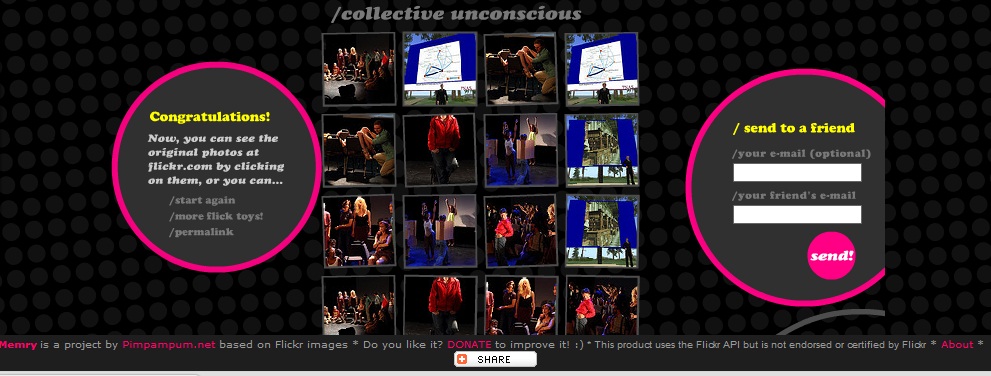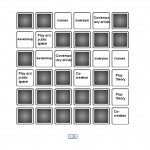Working with masses of pics like I blogged about yesterday made me think of playing…
Unconscious Memry
Have been inspired by this blog’s subtitle – Everdien’s external memory – to look into the way we use the Internet as as repository for our thoughts and images. It reminded me, first of all, of Jung’s idea of the collective unconscious, which Wiki describes as:
a part of the unconscious mind, expressed in humanity and all life forms with nervous systems, and describes how the structure of the psyche autonomously organizes experience. Jung distinguished the collective unconscious from the personal unconscious, in that the personal unconscious is a personal reservoir of experience unique to each individual, while the collective unconscious collects and organizes those personal experiences in a similar way with each member of a particular species.
“My thesis then, is as follows: in addition to our immediate consciousness, which is of a thoroughly personal nature and which we believe to be the only empirical psyche (even if we tack on the personal unconscious as an appendix), there exists a second psychic system of a collective, universal, and impersonal nature which is identical in all individuals. This collective unconscious does not develop individually but is inherited. It consists of pre-existent forms, the archetypes, which can only become conscious secondarily and which give definite form to certain psychic contents.”
Jung also made reference to contents of this category of the unconscious psyche as being similar to Levy-Bruhl’s use of collective representations or “représentations collectives,” Mythological “motifs,” Hubert and Mauss’s “categories of the imagination,” and Adolf Bastian’s “primordial thoughts.”
And this is what our collective unconscious looks like (based on the memry game from PimPamPum):
Am going to look into the way Flickr (Memry is based on Flickr tags) can be accessed using API interface
| « Touch | <-- previous post | next post --> | @Utrecht.ns » |
|---|









